Arising from the two ancient crossroad towns of Buda and Pest and bisected by the Blue Danube
Johann Strauss and 2001: A Space Odyssey made famous, the capital city of Hungary – and Paris of Eastern Europe – will fascinate and delight those who once associated the proud and rich culture with communist rule. With its rapid immersion into capitalism – and now the European Union – from its political metamorphosis thirteen years ago, the intensity of the charm and rich history provides a stark contrast against the proliferation of tourism, fast food eateries and shopping malls.
One might not notice that Hungary has modestly and valiantly weathered two world wars as well as an insidious and oppressive post war Soviet-based regime if it were not for the occasional and conspicuous artillery holes left in some of the older building walls as a testament to character. In reality, Budapest was one of the top travel destinations in the world prior to World War II, and the surge of post-soviet pride and privatization, in the end, has catalyzed Hungary’s return, despite a harrowing economy and unemployment, to the realm of a top travel destination for anyone who values another side of Europe. Magyars – the true and fiercely proud indigenous Hungarians – predominate but, since the city is a historical east-west conduit, a visitor will also experience a bigger bang for the traveling buck by exposure to some vestiges of other influences such as Slavic, Jewish, German, Austrian, Italian, Russian, Croatian, Tatar, ancient Roman and Ottoman all at prices well below western Europe.
When to Go
As with most European destinations, summer is the most popular time. If you are able to travel outside of summer, do so if reduced tourist crowds and costs are a priority. A primary advantage of summer travel is the inland beach experience of the Lake Balaton resort area. The largest lake in Europe and about three hours from Budapest, this is a prime summer retreat for many other countries within driving distance who want to avoid the throngs on the Mediterranean and Alpine Lakes. With latitude and seasons comparable to most eastern Canadian cities, Budapest is ripe with outdoor festivals and activities to take advantage of their longer days. Keep in mind that, for some hotel bookings, sometimes the higher season is the spring and fall due to increased business travel while the high season for airfare tends to be during the summer, typically from June 1 to September 15. You may have to weigh the lower fall airfares against the higher fall hotel rates and visa versa to see which provides the greatest net savings.
Getting There.
If flying directly to Hungary, Budapest is accessible from most North American cities with a plane change usually in London, Frankfurt, Paris, or Zurich. A diligent shopper will notice competition among the different domestic carriers and your lowest price is likely to be with them although they may code share much of the trip with a foreign carrier. The best deals are usually on the Internet, but always compare the popular travel web sites with the airlines’ own sites. Sometimes the airlines have specials that do not make it elsewhere. Along the same lines check the unannounced and unexpected fare specials from the code-shared European airline web sites such as Austrian Airlines or Swissair. These may sometimes hold the most surprises. Frequently you will get a better price by purchasing a package for both airfare and hotel from the same source.
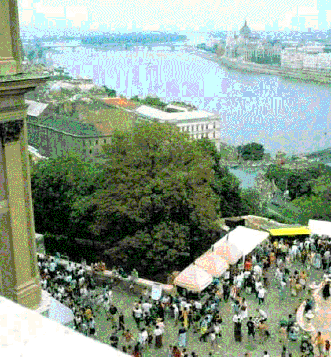
Hungary’s airline, Malev, seems to have shed the residual inefficiency and poor customer service left over from the pre-privatization years. Since they partner with Delta, you may well use them anyway. I do recommend them for the tremendous advantage of having a direct flight (if you need one) from some North American cities. The customary domestic airline route with a European connection almost always leaves in the evening from the US to the connection city arriving in the early a.m. EST. There you will have to wait for a flight to Budapest. A much shorter nonstop flight can be booked with Malev, or Delta (which allows you more valuable frequent flyer miles) departing from New York, Chicago, Los Angeles or Toronto.
If visiting Budapest from elsewhere in Europe, train is the most popular and efficient way. If not using a Eurailpass, any travel agency can book these in advance, otherwise purchase the ticket in a travel agency in the departure city. This usually nets you a better price than the train station. The most exceptional opportunity, available only there, is the five-hour Danube River hydrofoil ride from Vienna and Budapest. The rural scenery and serene experience is not to be missed. For information click here.
Getting Around
Public transportation is efficient, cheap and reliable. Between the underground metro, commuter trains, trolleys, streetcars and buses, one of them will be heading to where you want to go. A ticket costs about 80 cents and allows you to travel as far as you want on the vehicle you board. It is up to you to punch it in a device, which is periodically set to put three predetermined holes in your ticket. Most riders do not do this because they purchase a monthly berlet or pass. Do not be tempted to “let it go” because enforcement officers are consistent in their random and unpredictable verifications. Get a discount book of ten tickets useable for all forms of public transportation. Should you need a taxi, get one at a hotel if possible and avoid unlabeled taxis since Budapest taxi drivers are known to occasionally take advantage of foreign visitors.
Best Lodgings
Budapest is ripe with affordable accommodations. The more in advance you reserve and the longer you stay, the better the opportunities. Your best bet is to reserve through an agency at the airport or train station. Private rooms in homes are your best buy and a great way to get to know people. The national tourist agency IBUSZ can help you or in high season knock on the door of places displaying szoba kiadó or Zimmer frei signs.
Hotels are too numerous to make inclusive recommendations but most are satisfactory for the money. Domestic and Hungarian web sites are the easiest ways to shop for these – try the resources at the end below. For the hostler, opportunities abound – make preparations. If staying a week or more, a short term apartment rental is the best way to experience the city life and is usually the best buy. IBUSZ and Budapest tourist offices and travel agencies can help you the most. A couple of popular downtown suggestions to get you started are:
Peregrinus Guesthouse – originally provided by a university as a place for students’ parents to stay – it is open to the public. Rates are approximately $60 – $35 if reserved through a Ferihegy airport travel agent. Address is 3 Szerb utca (Serb Road), a cross street to the famous Vaci Utca pedestrian shopping/tourist district in the heart of Budapest, near many restaurants, attractions, and transportation. Telephone is 36 (1) 266-4911.
Charles Apartment Hotel – very clean rooms with a table and mini-kitchen and private bath for about $50 US per night. The staff is very friendly, and extremely helpful – address is Hegyalja út 23, telephone is 36-20-460-2134.
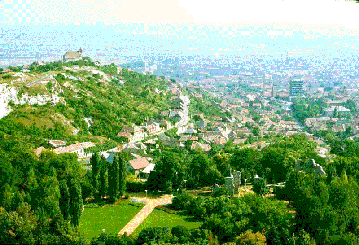
If you are not fiscally challenged and you deserve a respite of pampering and premium amenities, spring for a wellness and spa package at one of the Danubius Hotels, a Hungarian hotel chain, offering numerous four and five star choices in Budapest as well as other Hungarian cities. Each hotel is unique in some way whether in services, location, scenery or architecture. Some of the hotels incorporate the City’s famous medicinal baths and are located in more secluded and quiet areas of the city. Depending on the amenities desired, get a spa vacation package at approximately $600 to $650 per week as the best value. These hotels provide a plethora of pampering offering such luxuries as medical check ups and consultation, dental procedures, wellness and weight loss programs, massage and physical therapy and mineral baths all at relatively inexpensive prices. Many western European and North American visitors travel to Hungary just for bargain priced, yet high quality, elective medical care including cosmetic surgery and still save enough in fees to offset their travel expenses. Check here (has links to all their hotels and email addresses) and email danubius@hungary.net – their main office address is Danubius Hotels Group, Szent Istvan ter 11, telephone 36 1 374 7229.
Best Eats
An incredible amount of Hungarian life and social interaction revolves around food and meals and for good reason – it is some of the best and under appreciated eating in Europe. Many of the entrees are stews and soups called guylas (“goulash”) and exhibit the liberal use of the country’s primary consumable staple and export – paprika. It is virtually impossible to visit with local residents without being “forced” to eat and drink with them. If you are fortunate enough to do this, plan on eating your main meal with them – they will be pleased. While choices are too numerous to comprehensively discuss here, for convenience, avoid the over-priced tourist oriented restaurants. Some suggestions to start with include:
Merleg Vendeglo on Merleg utca (street) 6. If you want an authentic meal in downtown, the Merleg will exceed your expectations. The menu is typically Hungarian, delicious, frequented by locals and three persons can stuff themselves for about $25.
Another one is the Szent Jupat, Dékan utca 3 behind the McDonald’s at Moskva Ter, a major metro and bus hub.
For atmosphere, the Náncsi Néni Véndéglóje, Órdögárok út 80 has outdoor evening dining and live music.
The Udvarház a Hármashatár-hegyen, Hármashatár-hegyi út 2 will provide a stunning view from the Buda Hills if you can get a terrace table.
Hungarian dining is still predominantly a meat-based cuisine – the excellent vegetarian Marquis de Salade, VI. Hajós u. 43 will give you a break from this if needed.
You cannot leave this country without sampling the pastries and treats. The best, and a Hungarian original, are their “crepes” which is called palcsinta. My favorite is filled with cheese (as in cheese Danish filling) of which I can eat an embarrassing amount. They are also available with poppyseed, walnut, preserve or chocolate fillings.
Best Attractions
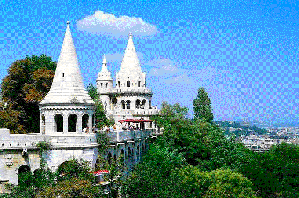
A favorite attraction for many are the numerous walking tours available throughout this friendly city. Start with exploring the courtyards and neighborhood markets from where you are staying. Expand via public transportation to the famous areas of Margaret Island (Margitsziget), Castle Hill, the Buda hills and Chain Bridge to start and you will also reap the benefits of breathtaking views of the Danube, a rich history and a high probability of meeting new friends.
Some of the best cultural attractions include:
The Aquincum Roman ruins – once the capital of the Roman province of Pannonia – shows the extent of the Roman Empire.
The Magyar Nemzeti Galeria (National Gallery) displays the finest collection of Hungarian art from the 13th century to the present.
The Citadel on Gellért Hill, built by the Hapsburgs between 1850-54, is the best spot for a panoramic vista of the City and includes a popular hotel, beer garden and bar. It’s construction and restoration uncovered geologic and natural resource finds.
The Magyar Nemzeti Muzeum (Hungarian National Museum) chronicles the country’s history including a Roman-era mosaic to a collection of communist posters.
The Szepmuveszeti Muzeum (Museum of Fine Art) includes an Old Masters Gallery (one of the largest collections of Spanish paintings outside of Spain), an antiquities section, and 19th- and 20th-century art.
Hosok Tere (Heroes Square) was constructed in 1896 to mark the 1,000th anniversary of the Magyars’ arrival in the area.
The Halaszbastya (Fishermen’s Bastion), built in 1905, is one of the most popular Castle Hill sites for a view of the City.
The 1904 Parliament is the second largest in Europe and still functions as the seat of government.
The Magyar Borok Haza (House of Hungarian Wines) has 450 of some of the most under recognized different wines from the 22 different wine regions of Hungary including a tasting and a wineglass.
The Szechenyi Lanchid (Chain Bridge) was the first permanent bridge to link the centers of Buda and Pest across the Danube in 1849 – don’t leave without a stroll across.
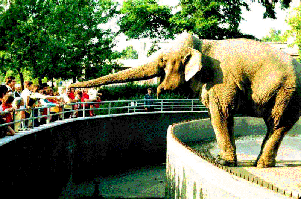
The zoo/circus/amusement park complex on City Park’s famous Animal Garden Boulevard is a favorite spot of Hungarian youngsters for 130 years.
Catch a musical performance at the famous State Opera House, Liszt Ferenc (Franz List) Music Academy or Matthias Church all historical wonders in their own right.
Night Life
Cafes, dance clubs, concerts and bars abound and can be especially lively in the summer with many staying open until dawn. In the summer, the fun heads outdoors on the Buda side of the City with all night concerts. A typical evening begins with a café and some music. Try Jazz Garden, Beckett’s, Fat Mo’s, Csiga Café, Szimpla, Captain Cook, The Mediterrán, Incognito, Pesti-Est Café, Buena Vista and Café Vian, New Orleans, Alcatraz, Castro, Columbus Pub, Egri Bororzo, Old Man’s Music Pub and Sorbarka Sorozo. Finish off with one of the man very diverse and lively dance clubs. Popular ones include Nincs Pardon, Zold Pardon, Bahnhof Lido, Supersonic Technicum.
Most unique is the Cinetrip Vizi-Mozi (water cinema) where the famous Rudas medicinal bath (see below) is transformed into a co-mingled venue of movies, music and dancing in the chest-deep water of the main pool.
Most Memorable
The Romans were the first to build baths in Budapest and you must partake in this aquatic experience to fully experience the city.
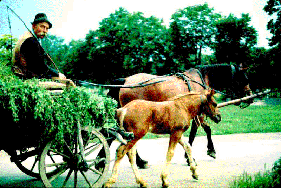
The 16th-century Ottoman invasions left some of the grandest Turkish or medicinal baths (gyogyfurdo) in the nation. They have mineral-enriched indoor thermal and swimming pools of various temperatures for lounging, chess and laps in the original architecture. The two most famous are Rudas Gyogyfurdo and Kiraly Gyogyfurdo.
The Gellert Gyogyfurdo, part of the famous Gellert Hotel, is a bathing complex of art-nouveau décor including thermal baths, saunas, outdoor pool (with a wave pool) and an indoor pool covered with a stained-glass skylight.
Nestled in the popular City Park and one of the largest spa centers and bathing complexes in Europe, the Szechenyi Gyogyfurdo has numerous indoor and outdoor pools, saunas, steam rooms and mud baths.
Margaret Island and the Danube Banks
Like a richer Central Park splitting the Danube River in two and accessible only by two bridges at each end, this is one of the best urban parks you will ever experience. Named for the daughter of King Béla IV in the 13th century, this open space oasis still has a subtle air of residual exclusiveness left over from the beginning of the nineteenth century when members of the royal family living in Buda transformed it into a landscape garden. By the turn of the century it had become a health resort owing to its therapeutic springs.
Today the island park includes a plethora of walking, inline skating and jogging pathways (the entire island is off limits to cars), river side sunbathing, a multi-pooled outdoor public swimming and medicinal complex, picnic areas, a tennis center and a Japanese garden of water lilies. If you are with companions, rent a four-wheeled pedal-driven two or four passenger cycle car to tour the island.
Events
Budapest continues to change rapidly and some published tourist information can be out of date. To assure current information, the best source in the city is Tourinform, telephone 1-317-9800 or 1-317-8992 or go to . Located at V. Sütö u. 2, just off Deák tér accessible by all three metro lines as well as a second office in the Liszt Ferenc tér district, English and reliable advice is dispensed freely.
Budapest offers numerous indoor and outdoor concerts, performances and festivals, especially for the two-week long Budapest Spring Festival, which includes performances of everything from opera and ballet to classical music and drama at all the major halls and theaters. Tickets are available at the Festival Ticket Service, V. 1081 Rákóczi út 65, telephone 1-333-2337.
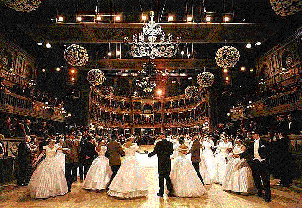
Some of the best opera and ballet happens during Budafest Summer Opera and Ballet Festival. Staged at the magnificent State Opera House, tourists and locals enjoy first class performances at ridiculously low prices. The winter season boasts the best New Year’s celebration in the city. Tickets are available at the Opera House box office at VI. Andrássy út 22, telephone 1-332-7914 or at the National Philharmonic Ticket Office, V. Vörösmarty tér 1, telephone 1-318-0281. For additional information check out V.I.P. ARTS Management, Hajós u. 13-15, telephone 302 4290.
The city’s Formula One Grand Prix is one of the European racing circuit’s most important annual events. Held at HungaroRing, call 36-2-844-4444.
Ferenc (Franz) Liszt Piano Recital Series takes place on selected dates in March, June, July, November and December.
Established in 1994 as Hungary’s very own “Woodstock,” Pepsi Island (Pepsi-sziget) on Óbuda Island in the Danube is the music festival that draws from all over Europe. The weeklong event usually begins in the second week of August and features foreign and local rock, folk, and jazz groups on multi-stages to the wee hours of the morning and camping is available. Pick up a program schedule at Tourinform.
St. Stephen’s Day is Hungary’s national day celebrating its founding with cultural events and a not-to-be-missed fireworks display over the Danube. Included is one of the region’s best traditional craft fairs held at the Castle District as well as the Danube Bank Festival with folklore and folk art events, pop music concerts and exhibitions.
One of the newer festivals, the National Jewish Festival features a spectrum of Jewish-related events in various locations throughout Budapest. Contact the Tourism and Cultural Center of the Budapest Jewish Community, Síp u. 12, telephone 36-1-343-0420.
The bacchanal festival of Eastern Europe, the Budapest International Wine Festival in the Castle District offers wine tastings, displays, auctions, and folk music performances. Contact the Hungarian Viniculture Foundation, Hertelendy u. 1/b, telephone 1-355-1847.
Also located in the Castle District’s Várszínház as well as the Erkel and Light Opera Theatres in Pest, the World Dance Festival provides both Hungarian and overseas performances including the Hungarian National Ballet. Contact Nemzeti Táncszínház Kht, Színház u. 1-3, telephone 201 8779, 201 8202.
The celebration of the Budapesti Bucsu Festival commemorates the departure of Soviet Troops from Hungary in 1991 and features pop acts, folklore performances and a carnival. Contact Budapesti Fesztiválközpont Kht, Egyetem tér 5, telephone 486 3300 .
The Danube Carnival is a gathering of both Hungarian and overseas dance groups with performances around the city, including the City Park and Margitsziget Open Air Theatre.
Other Practical Matters
Currency: As of January 2003, one US Dollar equals approximately 273 Hungarian Forints. Check this before you leave, because the Forint has been known to fluctuate significantly.
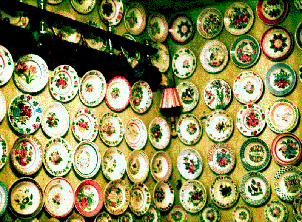
Language: The Hungarian language of Magyar is lesser known than most but English and German are heard almost everywhere travelers go.
Tipping: It is expected and appreciated. Although some consider it rude or lacking in etiquette to check a restaurant bill, do so anyway. Like some taxi drivers, waiters have also been known to take advantage of foreigners.
Telephones: Most numbers need the area code prefix 011 361 to dial from the US. Calling North America from Hungary for some reason costs three times as much as the reverse. If you must call, it is easiest to use the credit card swipe pay phone and dial 001 then the area code. Local calls in Budapest are all charged per minutes of use regardless of distance. In other words, there is no such thing as local calling areas. Since this can put a crimp in surfing the web, you will find all computers rigged to only go online during the moment of transmission. Nevertheless, it is a lot cheaper to use email than telephone. For overseas communication, use an internet café or a hotel business center. For local calling, purchase a phone card.
Shopping: While the Vaci Street (utca) downtown area is one of the most popular suggestions, beware of overpriced goods, pickpockets and prostitutes. Value Added Tax (VAT) can be refunded on goods only in excess of 50,000 Forints. You must keep and present all receipts at point of departure customs, which can take some time. You can also do it by mail. Detailed information on the procedure is available from the aforementioned tourist offices.
Health and Safety
As previously described, Hungary offers high quality bargain priced medical care should you want or need it – mostly a result of physicans’ ability to compete within private enterprise for the first time in half a century. Although common sense should be exercised in certain areas late in the evening as in any city, Budapest is still relatively safe regarding violent crime; however the art of pickpocketing and other scams have been elevated to an art. People skilled in these abilities have an uncanny ability to sense a traveler or tourist by simply looking at them no matter how much they may appear to blend in. More sophisticated ploys involve accomplices distracting you while another one (even an occasional child) lifts your money or bag. The Russian Mafia (or the like) controls many bars and may occasionally have establishments which may “pressure” you to buy inflated nonexistent admission or over priced drinks for “guests” before being allowed to leave.
Hot Tip!
Anytime you plan to be in Hungary for an extended period with a flexible schedule, check out round trip air travel to other destinations from Budapest by buying the airfare (and accommodations) in Hungarian Forints at a local travel agency. The prices in dollars are significantly less expensive even without advance purchase. For example, a “walk-in” price quote for next day departure from Budapest to Baltimore (my route in reverse) with connection in New York was approximately $400, two thirds less than most equivalent fares purchased in the US. Other similar fare bargains are available for other destinations. Depending on seat availability, the possibilities for a side trip from Budapest to, say, Spain, Russia or even Japan and back are numerous. If you are able to acquire “locally purchased” airfare in advance, the fare is even less.
There are numerous walk-in travel agencies in Budapest, which are busy, well run with knowledgeable staff and manage crowds efficiently. They seem to have embraced the customer service aspects of privatization. I suggest the following two for starters.
Vista Travel Agency and Center, Andrassy ut 1, telephone 1 36 1 267 8600, web including email . A very popular agency, Vista proclaims on its home page to have the “best fares in Hungary from Budapest to anywhere” and also provides information regarding tourism, incoming travel services, concerts and events as well as a visitor center, booking for ground transportation, the “best currency exchange rate” and an internet café.
